National CACFP Week, an annual education and information campaign sponsored by the National CACFP Association, is observed every year during the third week of March. From March 16-22, 2025, the week was officially recognized at the federal, state and local levels. This nationwide initiative highlights the critical role the USDA’s Child and Adult Care Food Program (CACFP) plays in combating hunger and promoting nutrition.
Read MoreThis year, National CACFP Week was formally recognized at federal, state, and local levels. Read more to learn how your peers raised awareness of the CACFP!
Read MoreDoes tomato paste and tomato puree credit based on the volume served?
Read MoreThe 2025 National Child Nutrition Conference (NCNC25) is set to be an inspiring and impactful event, bringing together professionals dedicated to child nutrition and community advocacy. This year’s General Session will feature an exceptional lineup of speakers, led by Texas Agriculture Commissioner Sid Miller, keynote speaker Mike Brown, Jr. and remarks from NCA leadership and USDA.
Read MoreIs there a milk transition period for infants and preschool age children?
Read MoreThis year, National CACFP Week was formally recognized at federal, state, and local levels. Read more to learn how your peers raised awareness of the CACFP!
Read MoreThe 2025 National Child Nutrition Conference (NCNC25) is set to be an inspiring and impactful event, bringing together professionals dedicated to child nutrition and community advocacy. This year’s General Session will feature an exceptional lineup of speakers, led by Texas Agriculture Commissioner Sid Miller, keynote speaker Mike Brown, Jr. and remarks from NCA leadership and USDA.
Read MoreInspired by NCNC25 Keynote Speaker Mike Brown, Jr.
The National Child Nutrition Conference is more than just a training opportunity, it’s a chance for our community to come together, connect and get inspired. This year, we are thrilled to announce our keynote speaker, Mike Brown, Jr., MS, CFRE, President and CEO of the YMCA of Metropolitan Fort Worth.
Read MoreCheck out these virtual events coming up this month at NCA!
Read MoreThe National CACFP Association proudly announces the upcoming 39th annual National Child Nutrition Conference (NCNC), set to take place both in-person at The Anatole Dallas and virtually online. The event will bring together over 2,100 passionate individuals from organizations across the country including child care centers, home providers, sponsoring organizations, school districts, afterschool programs, Head Start programs, Food Banks, tribal nations, and State Agencies.
Read MoreNCA would like to congratulate the 2025 recipients!
Read MoreThis year, National CACFP Week was formally recognized at federal, state, and local levels. Read more to learn how your peers raised awareness of the CACFP!
Read MoreIn December 2024, USDA released a request for information about grain-based dessert and high-protein yogurt crediting. After meeting with members and extensive research NCA has submitted our response to USDA stating our position on potential changes.
Read MoreOn January 27, President Trump’s office issued a memorandum based on his executive orders which calls for temporarily pausing federal funding. This has caused concern to many programs and people, including those in our community.
Read MoreNational CACFP Week will be here before you know it! This year March 16-22 marks this national education campaign designed to raise awareness of the CACFP and its contribution to combating hunger. Ask Your Governor to Proclaim March 16-22, 2025 as National CACFP Week!
Read MoreThe end of 2024 brought many changes and updates for the CACFP. USDA announced funding for child care to purchase local, released two requests for information, released seven pieces of guidance, published two studies.
Read MoreA new congress means there is an opportunity to push new priorities forward. Let your Representatives and Senators know that child nutrition is a priority for their constituents.
Read MoreThe Child and Adult Care Food Program has new creditable foods listed on the USDA Food Buying Guide! If you are new to the FBG, this interactive tool allows for easy display, search, and navigation of food yield information. In addition, users can compare yield information, create a favorite foods list, and access tools, such as the Recipe Analysis Workbook (RAW) and the Product Formulation Statement Workbook.
Read MoreThe Child and Adult Care Food Program community asked for more Spanish resources to be available on the National CACFP Sponsors Association website and we heard you! Available now in Spanish are more resources to help sponsors and providers with meal pattern requirements, best practices, and so much more!
Read MoreServing meals to young people year-round benefits children, families, and care providers. To do this, many providers transition from operating the USDA Child and Adult Care Food Program (CACFP) At-Risk Afterschool (ARAS) during the school year to the Summer Food Service Program (SFSP) while school is out. For an overview of the main differences between SFSP and CACFP ARAS, see the comparison chart below.
Read MoreNCA understands that the end of flexibilities will cause challenges for many CACFP sponsors and providers and we commend your continued commitment to providing nutritious meals and snacks to the children or adults in your care. In preparation for the end of the additional reimbursement, we have collected the following resources to help you successfully provide meals even if your available budget decreases.
Read MoreCDC created three new fact sheets for Early Care and Education (ECE) providers about Early Child Nutrition and Feeding. The fact sheets offer tips and best practices for supporting breastfeeding families, information about safe storage and handling of breastmilk, and strategies for introducing solid foods.
Read MoreDoes tomato paste and tomato puree credit based on the volume served?
Read MoreIs there a milk transition period for infants and preschool age children?
Read MoreIs a medical statement needed for meal modifications due to disability reasons?
Read MoreAre there updated sugar limits for breakfast cereals in the CACFP?
Read MoreAre there updated sugar limits for yogurt in the CACFP?
Read MoreCan a milk and fruit smoothie be served as the only item at snack?
Read MoreThe Child and Adult Care Food Program has new creditable foods listed on the USDA Food Buying Guide! If you are new to the FBG, this interactive tool allows for easy display, search, and navigation of food yield information. In addition, users can compare yield information, create a favorite foods list, and access tools, such as the Recipe Analysis Workbook (RAW) and the Product Formulation Statement Workbook.
Read MoreThe Child and Adult Care Food Program community asked for more Spanish resources to be available on the National CACFP Sponsors Association website and we heard you! Available now in Spanish are more resources to help sponsors and providers with meal pattern requirements, best practices, and so much more!
Read MoreServing meals to young people year-round benefits children, families, and care providers. To do this, many providers transition from operating the USDA Child and Adult Care Food Program (CACFP) At-Risk Afterschool (ARAS) during the school year to the Summer Food Service Program (SFSP) while school is out. For an overview of the main differences between SFSP and CACFP ARAS, see the comparison chart below.
Read MoreNCA understands that the end of flexibilities will cause challenges for many CACFP sponsors and providers and we commend your continued commitment to providing nutritious meals and snacks to the children or adults in your care. In preparation for the end of the additional reimbursement, we have collected the following resources to help you successfully provide meals even if your available budget decreases.
Read MoreCDC created three new fact sheets for Early Care and Education (ECE) providers about Early Child Nutrition and Feeding. The fact sheets offer tips and best practices for supporting breastfeeding families, information about safe storage and handling of breastmilk, and strategies for introducing solid foods.
Read MoreIn December 2022, the Indiana University CACFP Project Team released a report describing the child nutrition and care provision experiences among early care and education (ECE) stakeholders, sponsors, and center directors during the COVID-19 pandemic. The study was conducted in four states and a variety of ECE stakeholders participated. The study identifies six common experiences among ECE stakeholders during the COVID-19 pandemic.
Read MoreIn December 2022, the Indiana University CACFP Project Team released a report describing the facilitators and barriers to CACFP participation by family child care homes (FCCHs). The report concludes with suggestions for potential strategies to promote participation in the CACFP by FCCHs. The study was conducted in two states, Arizona and New York, that have varying levels of CACFP participation. The study outlines the facilitators and barriers to FCCHs’ enrollment in CACFP and recommends a few strategies to increase participation.
Read MoreIn October 2021 the USDA released a report on the Study of Nutrition and Activity in Child Care Settings (SNACS), which is the first nationally representative, comprehensive assessment of the CACFP.
Read MoreThe 2022 FACTS Report suggests problems in food advertising to children, and the newly issued National Strategy on Hunger may offer a solution.
Read MoreThis is a broad overview of the newly published findings of the 2021 study conducted by the National Farm to School Network and Michigan State University’s Center for Regional Food Systems. Read the complete report for an in-depth look at their findings.
Read More

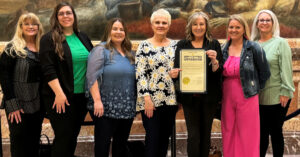

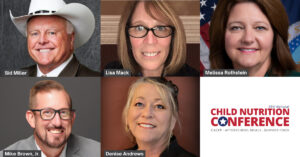




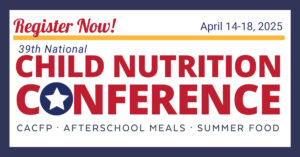

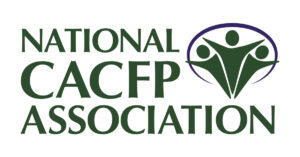
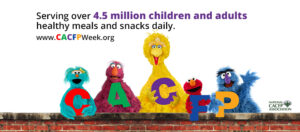

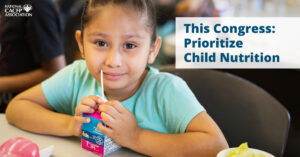


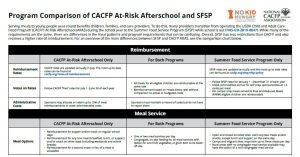

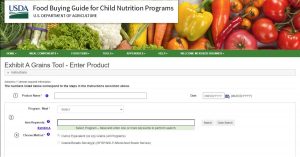










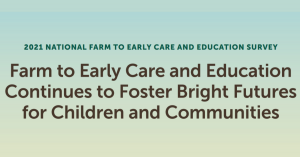


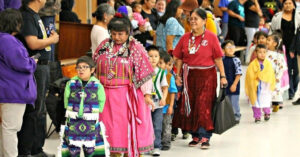
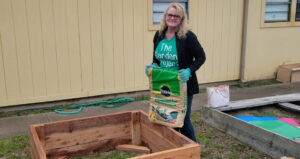
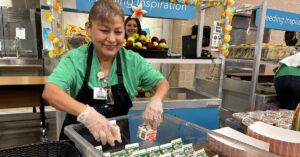

NCA Response – Request for Information on Grain-Based Dessert and High-Protein Yogurt Crediting
In December 2024, USDA released a request for information about grain-based dessert and high-protein yogurt crediting. After meeting with members and extensive research NCA has submitted our response to USDA stating our position on potential changes.
Read More